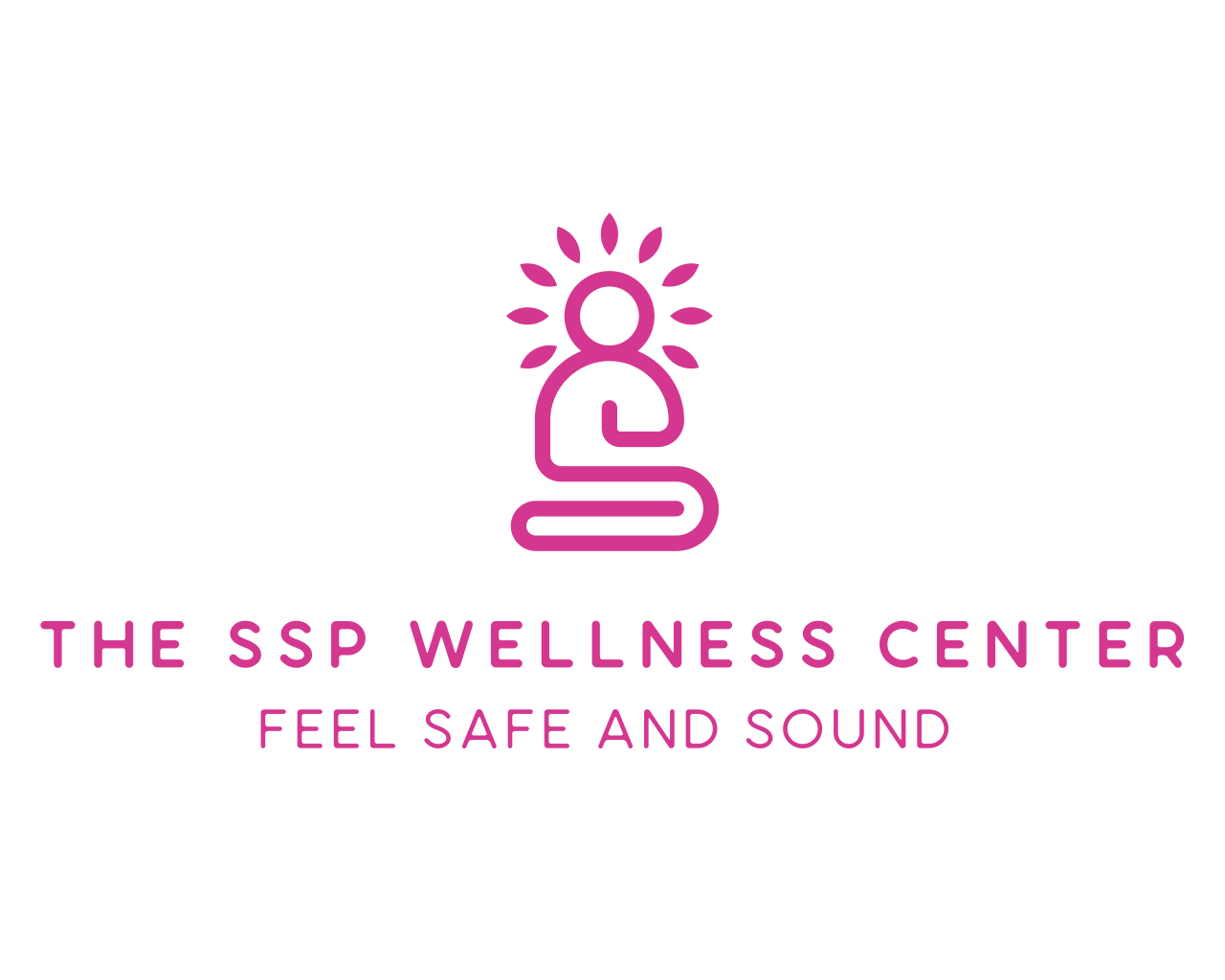So, you’ve heard about the Safe and Sound Protocol (SSP) – maybe from your therapist, a friend, or one of the many people who say it changed their life. You might already know it helps with anxiety, trauma, or sensory overload. But then you start digging, and suddenly you stumble upon the dreaded topic: side effects.
Are they real? Are they dangerous? Should you be worried?
Let us put your mind at ease. In this article, we’re diving into the full story behind SSP “side effects”: what they are, why they happen, how to minimize them, and why they might actually be a good thing. By the end, you’ll understand:
- Why some people experience “side effects” (and why others don’t)
- What “side effects” mean for your nervous system
- How to work with your provider to keep the journey safe, smooth, and supportive
Let’s start from the top.
What Is the Safe and Sound Protocol?
The Safe and Sound Protocol is a therapeutic listening program created by Dr. Stephen Porges, the founder of Polyvagal Theory. It uses specially filtered music to stimulate your vagus nerve and help bring your nervous system out of survival mode and into a state of safety, calm, and connection.
SSP isn’t just music therapy. It’s a targeted, science-backed tool that activates the middle ear muscles, improves auditory processing, and helps reset your neuroception – your nervous system’s internal radar for safety and danger. You can think of it as a gentle workout for your nervous system that improves how your body and brain respond to the world around you.
That’s it in simple terms anyway. If you want to get into the nitty gritty of the SSP, you can learn more here.
What Is SSP Used For?
People turn to SSP for a wide variety of reasons, including:
- Anxiety and panic disorders
- Trauma and PTSD
- Autism and sensory processing disorders
- ADHD and neurodivergent behaviors
- Chronic pain or chronic fatigue
- Misophonia or noise sensitivity
- Emotional regulation challenges
- Sleep issues
- Digestive complaints
- And so much more…
In short; if you have conditions rooted in, or linked to a nervous system stuck in fight, flight, or freeze mode, SSP might help nudge you back to safety and resilience.
What Are the Benefits of SSP?
There are many potential benefits to SSP, but like any nervous system-based therapy, results can vary. Some people feel better right away. Others may take a little time to reap the rewards.[*]
Here are some of the commonly reported benefits:
- Reduced anxiety and improved emotional regulation
- Better sleep quality
- Increased feelings of calm and safety
- Improved social engagement and connection
- Reduced sensitivity to sound and sensory input
- Enhanced focus, memory, and learning
- Greater resilience to stress and overwhelm
Are There Side Effects to the SSP?
Now the burning question that’s been on your lips…are there side effects with SSP?
Let’s be real: yes, some people do experience what might be called “side effects”. But here’s the nuance: “side effects” in SSP aren’t like those from a medication. You’re not reacting to a foreign substance – instead it’s the result of engaging your own nervous system.
And sometimes, when a previously shut down or overworked nervous system starts to shift, things get stirred up.
Not everyone will feel this. But if you do, don’t panic. Keep reading to understand why it happens and how we can support you through it.
Are SSP Side Effects Really Side Effects?
Technically? No. Not in the sense that we are used to anyway.
SSP “side effects” are better thought of as nervous system responses – signs that your autonomic nervous system is being activated by the protocol. It’s basically your bodies way of showing us that it is responding to the input (filtered music), and trying to make sense of the changes taking place in the nervous system.
In that sense, these aren’t “bad” side effects. They’re evidence that the program is working.
SSP is giving your nervous system a set of new instructions. And if your system has been struggling under an unhelpful set of instructions for quite some time, upsetting that status quo might feel a bit uncomfortable.
It might mean reprocessing old patterns. It might mean temporarily feeling a symptom more intensely before it fades. It’s all part of recalibrating your existing, and likely dysregulated, baseline.

What Are the Side Effects of SSP?
We like to think of “side effects” as “nervous system responses,” and they’re as unique as you are. Just as the benefits of SSP differ for each individual, so do the responses along the way.
Here are some of the most commonly reported effects:
- Fatigue or low energy
- Emotional waves (e.g., tearfulness, irritability, anger, sadness)
- Headaches or mild dizziness
- Digestive changes (more on that below)
- Increased sensitivity to sound or light
- Heightened awareness of internal sensations
- Temporary anxiety or sleep disruption
- Exaggeration of current symptoms (e.g., more intense sensory processing challenges)
A common thread? In our experience, many side effects reflect activation of the vagus nerve or a temporary amplification of already-present symptoms.
How Bad Might My Safe and Sound Protocol Side Effects Be?
The good news: for most people, side effects are mild and manageable – IF the program is administered correctly.
We’ve worked with many clients, and with the right pacing, most only report minimal discomfort (if any).
Online forums may paint a scarier picture, but what they often leave out is that those clients may have:
- Gone too fast
- Not had proper guidance
- Ignored their body’s signals
SSP is powerful. That’s why we use a microdosing approach – sometimes literally seconds per day – to meet you exactly where your system is and keep “side effects” minimal.
With the right provider, side effects should never feel overwhelming.
What Causes SSP Side Effects?
So we’ve touched on the fact that “side effects” are actually more appropriately framed as “nervous system responses”. So what cause these responses in the first place?
- Nervous system activation: Your body is responding to the stimuli in the music and beginning to shift its long-standing patterns. And that’s a good thing!
- Increased vagal tone: The vagus nerve regulates everything from digestion to mood. Stimulation can bring temporary shifts in these areas as your system finds a new way of being.
- Going too fast: This is the big one. If you or your provider push through the program too quickly, your system may get overwhelmed and these “side effects” will feel a lot more unmanageable.
Should I Just Push Through?
Ok, so now you understand what SSP “side effects” may feel like, and why they are happening. So should you just push through them? It’s a common question.
A simple way to decide is to use a “traffic light” check-in:
Green Light: You notice mildly uncomfortable sensations, emotions, or thoughts, but you can sit with them, observe what’s happening, and still feel basically safe and grounded. It’s typically fine to keep going.
Yellow Light: Your reactions feel stronger – maybe you’re more irritable, tired, or angry – but you can still manage daily life. Check in with your provider. You might want to shorten sessions, or take more breaks.
Red Light: The responses feel too intense to watch without getting swept away—things like panic, feeling out of control, or being so drained you can’t function well. This is when you stop, contact your provider, let your system settle, and reassess.
Slowing down or pausing isn’t “failing”; it’s working with your nervous system, not against it. And whichever light you’re in, always check in with your provider so they can help you fine-tune your plan and keep you in that sweet spot where change happens without overwhelm.
When Side Effects Are a Good Thing
Yes, that’s not a misprint.
When done properly, SSP gently nudges your nervous system out of its comfort zone. That small stretch is what builds resilience and capacity.
Think of it like going to the gym. The first few workouts may make you sore. But you’re not injured. Your body is adapting, growing stronger.
We use these nervous system responses to guide pacing. When you feel a mild effect you can sit with and observe (without becoming overwhelmed), that’s a sign that you’re engaging and growing.

How to Manage or Minimize SSP Side Effects
The key is working with an experienced provider. Always.
A good provider doesn’t hand you a one-size-fits-all protocol. They listen to your nervous system feedback and adjust your pacing accordingly. That’s how they effectively and safely deliver the program with minimal and manageable “side effects”.
Here’s what a good provider should do:
- Help you find your perfect pace. Sometimes as slow as a few seconds per session
- Advise on pausing and reset breaks when needed.
- Encourage personal reflection so you can monitor for emotional and physical changes
- Stay in regular contact. So you can provide honest updates that help them readjust your protocol as needed
- Stop you from going rogue! Nobody wants to be a party pooper, but trust us, the music is that powerful!
We’ve had clients push too far too fast, ignoring guidance, and ending up with vertigo or emotional flooding. It’s never worth it. Trust the process. Trust your provider.
How Long Do Safe and Sound Protocol Side Effects Take to Resolve?
Typically, “side effects”:
- Are temporary
- Come and go in gentle waves
- Ease with rest and support
If anything ever feels too much, take a break and contact your provider. Most discomfort resolves within a few days. Occasionally, you might need up to a week or more.
But always communicate with your provider. They will help you pause, reset, and move forward safely.
Is It an SSP Side Effect… or Just Me?
It can be tricky to tell. Here’s a general guide:
- New symptoms? Could be SSP.
- Same symptoms, but stronger? Likely SSP amplifying an existing pattern.
- Unrelated or random? Possibly SSP, but more difficult to tell if you’re layering in other therapies.
That leads us to our next point…
I’m Doing SSP Plus Everything Else – How Do I Know What’s Causing What?
This is common, especially with those of us who want to heal, like, yesterday. But stacking multiple modalities can confuse your system and your ability to track what’s helping (or hurting).
We strongly recommend:
- Starting with SSP as a standalone for a while
- Tracking your responses daily
- Only layering in other complementary therapies once you’ve established your baseline with SSP
- Adding other modalities only as appropriate to your nervous system. Some systems can handle, and will benefit from, a few therapies. Some systems need very minimal input and stimulation.
Especially for complex cases, less is always more.
Final Thoughts: SSP Side Effects Are a Guide
“Side effects” aren’t setbacks. They’re feedback.
They tell us how your system is responding. They show us your limits, your strengths, your windows of tolerance.
When we work together to fine-tune your pace, we can create an SSP journey that feels safe, supportive, and sustainable. Your nervous system deserves gentleness.
Curious About Starting SSP?
We offer a free 20-minute consult where we can answer your questions, explore if SSP is a good fit, and share how we’d gently tailor the program for your unique system.

